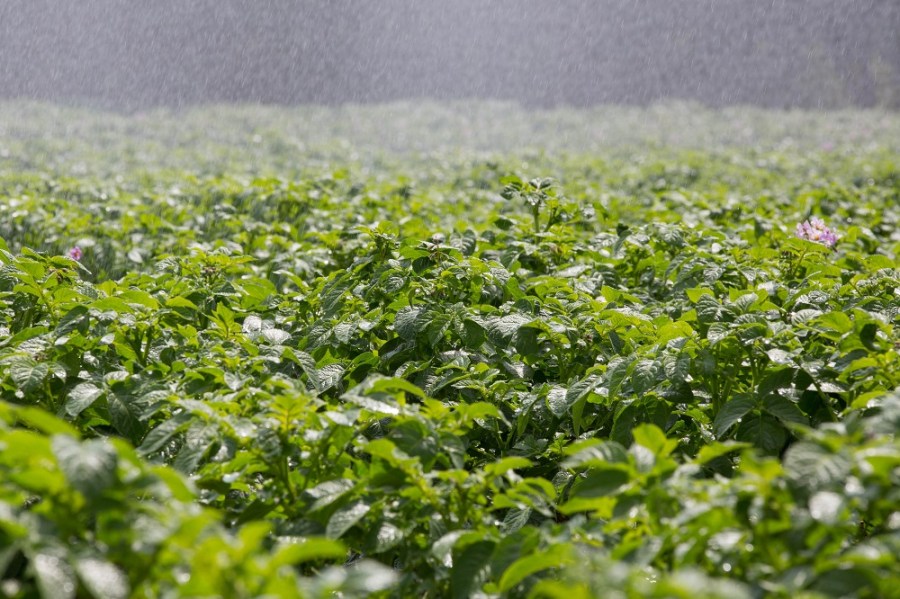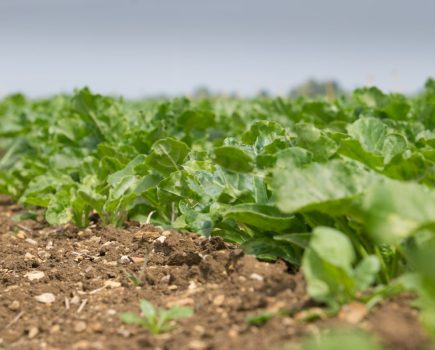July is usually a time to focus on irrigation scheduling, but June’s heavy rainfall has set back blight spraying for one Norfolk potato grower. CPM reports.
The severity of the rain we receive seems far greater than what we were used to just a decade ago.
By Lucy de la Pasture
The 2016 season is proving to be another difficult year for potato growers, with regular rainfall disrupting blight spraying. Living with the weather however, is a fact of life, but with potato production under the threat from product withdrawal and looming water reforms, the future holds great uncertainty.
“It might be me, but the severity of the rain we receive seems far greater than what we were used to just a decade ago. It’s creating management difficulties and undermining our profitability,” says James Harrison of EG Harrison and Co., who farm 300ha of processing potatoes across North East Norfolk from their base near Cromer.
“Applied water costs about £100/25mm/ha, so accurate moisture monitoring is essential,” he says.
The business hasn’t needed the full volume of water permitted by its irrigation licences for more than four years, but pressure to improve efficiency of use and the prospect of losing volume under Defra’s proposed reforms, is causing concern and incurring costs.
“We’re seeking to maintain water security for our business. The Environment Agency needs to recognise the importance of water to our sector and afford it equal status with other users, but we also need to make more efficient use of what can be a scarce resource.”
Drip tape
Last year, the farm trialled drip tape supplied by Wroot water with its processing customer Lamb Weston Meijer. The drip irrigation system proved beneficial, delivering a 25% reduction in water use and an 18% increase in yield. The trial is being repeated this season across 11ha, but with the regular rainfall since planting ensuring adequate soil moisture the system is yet to be switched on.
New technologies however, are already playing a large part in the business’ water management. NIAB CUF provides guidance on irrigation scheduling while enviroscan probes, through Soil Moisture Sense, and rain gauges provide real-time data on local rainfall and plant water uptake.
The wet weather however, while saving the need for irrigation, is causing much concern about late blight control.
“We’re experiencing extreme blight pressure. In the 25 days up to 25 June we received 125mm of rain on top of what was already a wet start to the season, that meant planting took place over nearly an eight-week period.
“Consequently, we’ve crops ranging from 25% canopy to full canopy. Our ability to apply fungicide in a timely manner
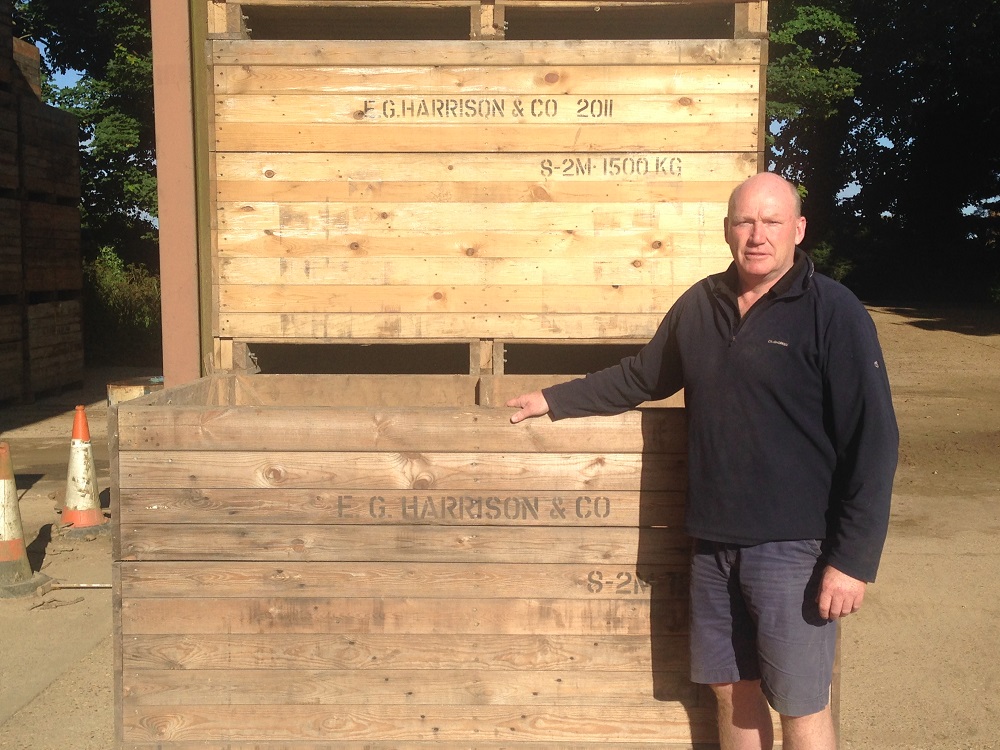
Heavy rain events are creating management difficulties and undermining profitability for James Harrison.
is being challenged and the situation is influencing our product selection.
“In a dry season, there are opportunities to save on fungicides, but in years like this we’re focussed on the quality products. This means building a programme around Infinito (fluopicolide+ propamocarb), because it doesn’t need tank-mixing and its curative and anti-sporulant activity are a priority in the strategy.”
James Harrison is a director of Nelson County Produce, a grower group that supplies direct to Kettle Foods at
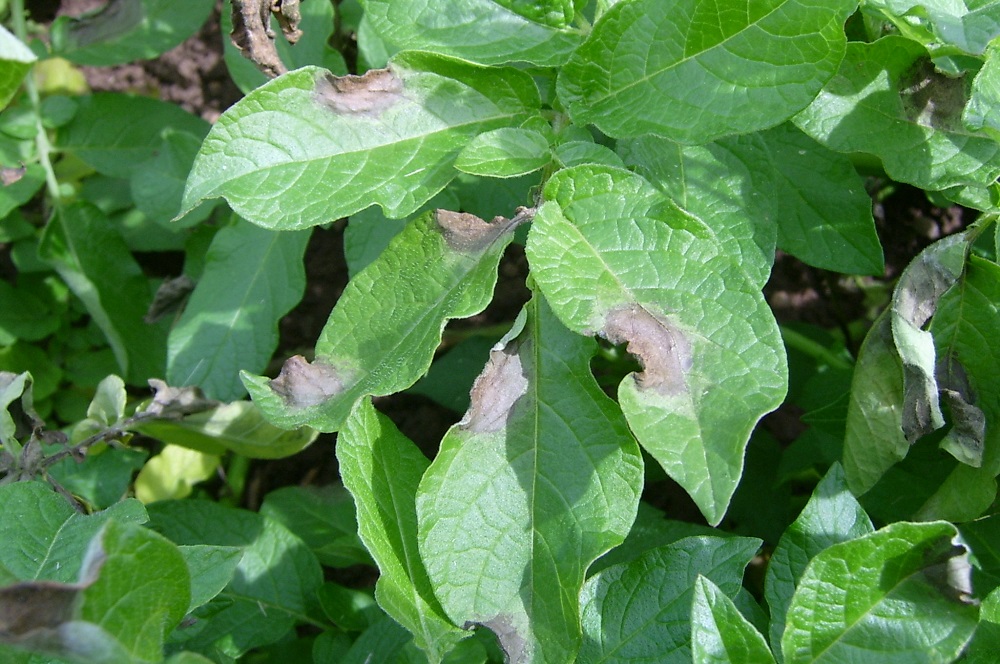
There’s a focus on the quality products because the season is challenging the farm’s ability to apply fungicide in a timely manner.
Norwich on a year-round basis. He describes the ability to produce a product to exacting customer requirements as essential to all parties.
This focus on quality begins with producing a large percentage of their own seed so, as he puts it, “if you can manage the quality going in, you have a better understanding of knowing the quality coming out”.
He also prefers a larger seed fraction, when possible, to achieve greater stem numbers for early production. Variety selection also plays a large part, but this is driven more by end-user needs than agronomic fit.
“Wherever possible we try to match varieties to soil type, lifting date and store capability.
“Low levels of potato cyst nematode (PCN) is also an issue on some land so here we plant Innovator which is resistant, but not tolerant. We’re also trialling Performer as a replacement for Markies which is resistant and tolerant. Other varieties grown include Rosetta, Daisy, Heraclea, Taurus, Ivory Russet, Fontane, Rooster and Pentland Dell.”
Markies presents another management problem which can disrupt activities. It’s a late maturing variety noted for its slow skin set, which in a late season can cause harvesting delays.
“It typically requires a minimum of four weeks’ (ideally) dry weather post burn off for skin set. In hindsight, I questioned the value of irrigation in 2015 – high humidity and high ambient temperatures made those early storage months very challenging,” he says.
Another area where technology may prove beneficial is in identifying land with high stone content. He’s looking at
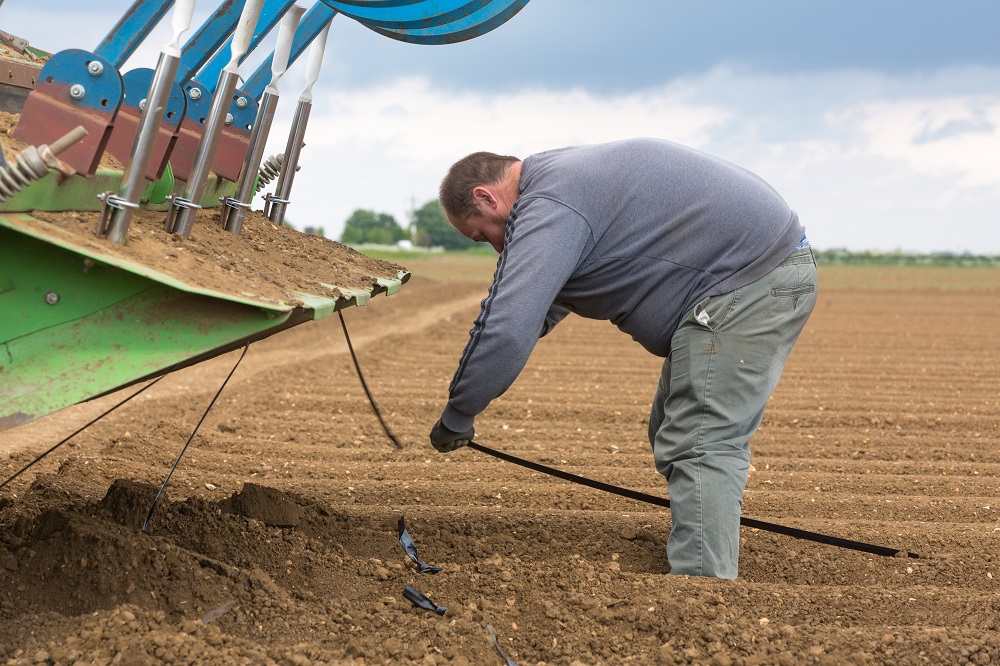
The drip irrigation system is delivering a 25% reduction in water use and an 18% increase in yield.
the potential of using electro conductivity scanners to create soil texture maps, working with Frontier, and has begun to see how they might be adapted to identify land that might be costly to crop.
“It takes time to develop an understanding of soil quality on new land and stony ground can be expensive to farm because of the high wear to machinery. If we can identify the parcels of land to be avoided, be they whole fields or just small areas, there are potentially significant savings to be realised,” he says.

